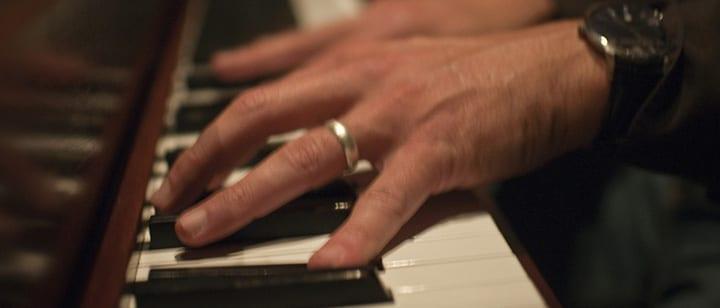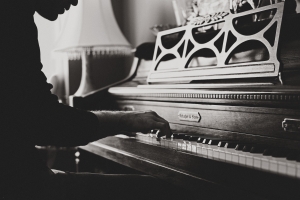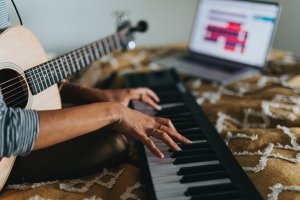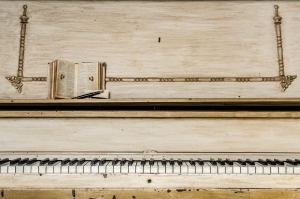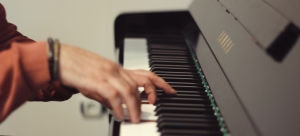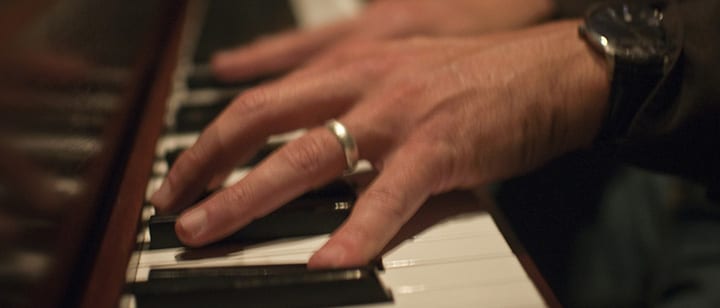 As you’re playing the piano, does it feel like your left hand just can’t keep up with the right? Here, Corona, CA teacher Milton J. shares a few left hand piano exercises to add to your practice to target this common struggle…
As you’re playing the piano, does it feel like your left hand just can’t keep up with the right? Here, Corona, CA teacher Milton J. shares a few left hand piano exercises to add to your practice to target this common struggle…
The dreaded left hand. The hand with a mind of its own, the hand that lags behind the right, and the hand that does not seem that smart. While all of these conjectures are common, it stems from a lack of detailed attention to developing the accompanying left hand in conjunction with the melodic right hand.
Here are five piano exercises that will help make your left hand stronger, faster, and ready to move with the right!
What are Good Finger Exercises for Piano?
When you’re learning how to play the piano, some of the best piano exercises you can do include:
- Ascending and descending pentascales
- Five fingers on five keys
- Playing in thirds
- Over-legato
- Five-note pentascales with one finger per note
- Full (or 1-2 octave) scales
- Playing two notes at a time in one hand
Of course, it’s important to master the basic notes, keys, and chords on the piano as you strengthen both your left and right hand, too. You’ve got to be a more holistic player! Here’s a video with more information on how to do that:
5 Left Hand Piano Exercises
Want to learn some left hand piano exercises that will make you a strong player – regardless of which hand you’re focusing on? These left hand piano exercises are some of the best you can do!
1. I Can Play with One Hand Tied Behind My Back
With this exercise, practice playing the melody that you’d normally play on your right hand. What would seem like an easy task is not as easy if you’re not used to utilizing the left hand like this, so this will be a nice challenge for your less-dominant left hand.
2. A Slow Burn
Now, you should slow things down to make sure you’re being accurate and allowing your hand and arm muscles to memorize the movements and placements for your piano exercises and songs. As you repeat the same motions, muscle memory will begin and you’ll be able to eventually speed things back up a tempo. However, be sure not to rush it!
3. The Hanon Effect
Did you know that even many seasoned professional pianists haven’t fully master all 60 Hanon exercises? I know your follow-up question after this answer, however – “What are the Hanon exercises?” They are piano exercises created by pianist and teacher Charles-Louis Hanon over 100 years ago and are still just as useful today. These exercises work on building finger and hand speed, dexterity, coordination, agility, and strength.
4. Play. Compliment. Repeat.
This exercise is mostly a simple extension of the exercises you’ll already working on. The difference here is giving yourself a momentary pause after completing an exercise correctly, lifting your fingers off the keyboard, and complimenting yourself with a repeated phrase or gesture (like saying “Great job, Milton!” or patting yourself on the back).
After doing so repeatedly, you may start to realize that your right hand is able to immediately go to your chords and melodies without much thought. Essentially, you’re helping to accelerate your muscle memory within your hands and arms. Continue this exercise through the circle of fifths and keep it going until you’ve mastered it in all 12 keys.
5. Let It Rest, Let It Rest, Let It Rest
Once you’ve given your left hand a good workout through all those exercises, LET IT REST. More than we often realize, growth also comes when we’re away from the piano. It’s that period in between your practice sessions when the muscles grow and build, which is why you may end a practice session fatigued and not necessarily feeling satisfied that you mastered what you set out to master. However, don’t let yourself be discouraged, as the next time you sit down to the piano, you’ll notice it’s a lot easier to do what you once struggled with. This is essentially the “hump” to get over, as many students tend to give up in this moment, leading to quitting much too early due to the perceived discouragement.
Don’t let this negativity set in. Let your muscles rest, let the knowledge marinate, and return with a determination that you’re going to accomplish all of your piano-playing goals!
Other Piano Exercises for Beginners
Of course, it’s not just left hand piano exercises that you need to do if you want to become a more skilled and versatile pianist. You’ve got to work all the muscles in both hands to see lasting progress!
If you’re looking for some good piano exercises for beginners you may want to try doing some of these other piano finger exercises as well.
1. Hanon Piano Exercises
Hanon piano exercises are daily piano exercises that you can do as a beginner. They provide the ideal level of practice for pianists of all abilities, levels, and skills. They can not only improve your precision and speed but can also boost your technical skills.
The exercises progress logically so that you can get better on a daily basis. These daily piano exercises have been transposed to every major key and have been perfected to help you get better fast. There are more than 60 original Hanon piano exercises that have now been adjusted and perfected to be incredibly effective.
Most of these piano exercises focus on repetitions that strengthen your fingers and hands while also installing independence in each digit.
2. TakeLessons Piano Exercises
You’ll find lots of piano finger and piano hand exercises at TakeLessons! Even if you decide not to take formal piano lessons online, you can always tap into the many resources our website has to offer. Check out this list of the best piano hand exercises and finger exercises you can do!
3. 5 Finger Patterns
One of the best and easiest piano exercises you can do is five finger patterns. These use five fingers of each hand so they are great left hand piano exercises as well as for the right hand.
Start on C, then play each note going up slowly and then downward slowly. Encourage both hands to work together from the start.
This piano exercise will teach you how to coordinate your hands while playing while also improving your positioning, finger independence, and tone quality.
4. Triads
Triads are not only great piano exercises to do but they also serve as wonderful (and brief) warm-ups. These are quite easy to understand and are a great stepping stone to learning how to play scales.
Here’s a video explaining piano triads for you:
5. Major and Minor Scales
It’s no secret that practicing scales is a great way to improve your skills as a pianist.
Go through major and minor scales on a regular basis!
Here’s a video with more information on piano scales:
6. Repetition Exercises
Repetition activities are excellent piano hand exercises. These exercises can help engrain agility and speed, since playing repeated notes with the same finger isn’t usually a great idea.
Here’s a video with some great piano exercises in repetition:
7. Shadow Playing
Shadow playing is one of the best piano hand independence exercises you can do. This technique involves closing the fallboard and playing the notes on the page without the keys in front of you.It can be tough at first, since you’ll have to find new ways to measure distance and anticipate fingering. You can do this silently on the piano or not on the keys at all.
8. Sight Reading
Of course, sight reading is one of the best piano exercises you can do, too. It’s a unique exercise because it is not only something that can help build skills in other areas but is also a skill in and of itself.
To get better at sight reading, be sure to start by looking at the keys signature and to analyze any accidentals or repetitions before you begin. Try to work out the difficult rhythms first then shadow play (see above!) the entire passage at a slower tempo.
Then, actually play the passage, but again, at a slower pace than what the score calls for.
Over time, you’ll find that sight-reading helps you get better at playing all kinds of different music!
What is the Best Piano Exercises for Beginners?
When you’re trying to improve your left hand strength and agility as you play the piano, it can sometimes be a challenge to get your skills to match up to those of your right hand – particularly if you are naturally right-handed!
All of the piano exercises mentioned above should help you become a stronger pianist. Practice often – shoot for about 30 minutes a day, ideally with a professional piano teacher – and you should see some improvement in no time!
 Milton J. teaches guitar, piano, singing, music recording, music theory, opera voice, songwriting, speaking voice, and acting lessons in Corona, CA. He specializes in classical, R&B, soul, pop, rock, jazz, and opera styles. Learn more about Milton here!
Milton J. teaches guitar, piano, singing, music recording, music theory, opera voice, songwriting, speaking voice, and acting lessons in Corona, CA. He specializes in classical, R&B, soul, pop, rock, jazz, and opera styles. Learn more about Milton here!
Photo by guruscotty
Suzy S.
